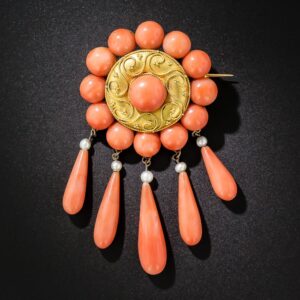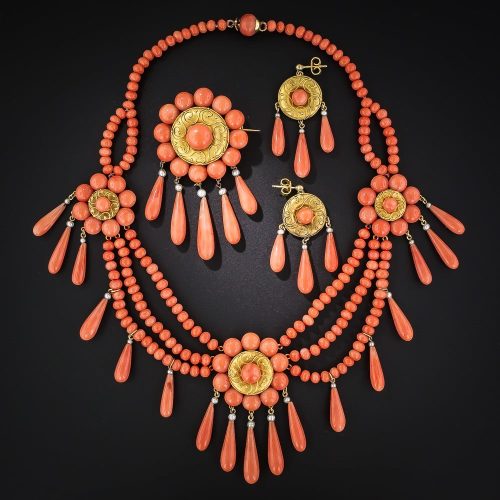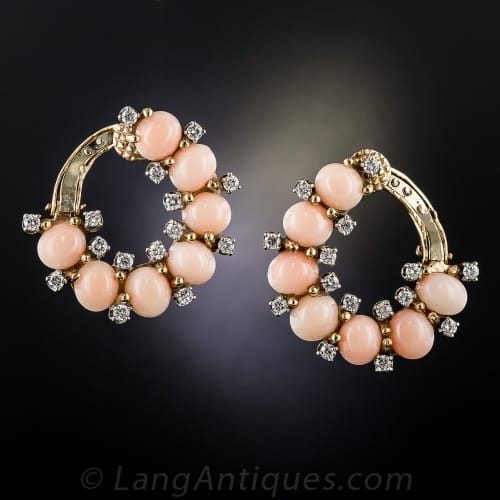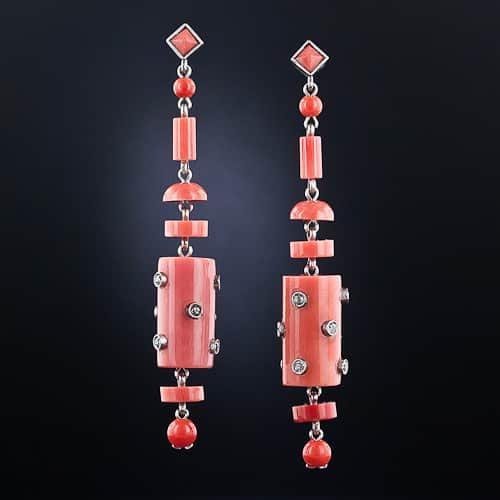
Coral is one of the very few organic gemstones. It consists of a mass of skeletons of tiny marine invertebrates that once lived in a colony attached to rocks or other objects on the ocean floor. The variety of coral that is of interest to jewelers and mystics is referred to as “precious coral”. It varies in color from blood red to a very pale pink. It occurs in tropical and subtropical oceans, usually at a depth of fewer than 50 feet, although there are some exceptions.
A Brief History of Coral
Since ancient times, the population surrounding the Mediterranean has used coral decoratively, medicinally, and spiritually. It flourishes around the coasts of Morocco, Corsica, and Algeria. The Romans hung pieces of coral around the necks of their children to protect them from illness and danger. Worn around a woman’s neck, it was a charm against sterility. Pliny tells of how coral was used to quiet tempests and ensure that the wearer would never be struck by lightning.
The ancient Chinese viewed coral as a symbol of longevity and official promotion. The ancient Greeks believed coral had the power to counteract witchcraft and protect against storms, poisons, and robbery.
Early in the 19th Century, the Navajo named coral one of the eighteen sacred objects, which is why it is common in Native American Jewels and ornaments.



Eighteenth Century Italian Coral Colors
| Bianco | White |
| Pelle d’Angelo, Rosa Pallido, Rosa Vivo | Pink |
| Rosso, Rosso Scuro, Arciscuro | Red |
Gemological Information for Coral
| Color: | Red, Orange, Pink, Peach, Black, Brown, Gold |
| Crystal Structure: | Amorphous (organic) |
| Refractive Index: | 1.48-1.56 |
| Durability: | Soft and Fragile |
| Hardness: | 2.5-4 |
| Family: | |
| Similar Stones: | Coral may be Mimicked by Glass, Plastics and Ceramics |
| Treatments: | Dye |
| Country of Origin: | Generally Between 30 Degrees Below and Above the Equator, Tropical to Sub-Tropical Waters |
Coral Care
| Ultrasonic Cleaning: | Not Safe |
| Steam Cleaning: | Not Safe |
| Warm Soapy Water: | Not Safe, Use a Damp Cloth |
| Chemical Attack: | Not Safe |
| Light Sensitivity: | Sensitive |
| Heat Sensitivity: | Not Safe |
Gems & Gemology: The Quarterly Journal of The Gemological Institute of America.
Coral:
- Spring 1950, Coral, the Forgotten Gem, by Copeland, p. 282, 6pp.
- Fall 1959, Black Coral of Hawaii, p. 337, 1p.
- Fall 1960, Black Coral of Hawaii, p. 72, 3pp.
- Summer 1962, A White Coral Substitute, p. 304, 2pp.
- Spring 1967, Black Coral Characteristics, p. 146, 1p.
- Fall 1967, Dyed Angel-Skin Coral, p. 209, 1p.
- Summer 1973, A Partly Silicified Coral, p. 182, 2pp.
- Fall 1973, Hawaiian Black Coral, by Webster, p. 196, 3pp.
- Fall 1973, Silicified Coral, p. 206, 2pp.
- Fall 1973, Lapidary of Black Hawaiian Coral, p. 232, 1p.
- Winter 1974, Blue Coral, p. 369, 2pp.
- Winter 1974, Hawaiian Black Coral, but with a Golden Sheen, p. 369, 3pp.
- Summer 1979, An Examination of the New Gilson “Coral,” by K. Nassau, p. 179, 7pp.
- Winter 1979, Gold Corals – Some Thoughts on Their Discrimination, by Grahame Brown, p. 240, 5pp.